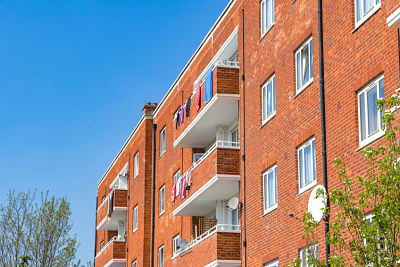
Landlords have a duty of care to their tenants, which involves (among other things) keeping their properties in good condition. Tenants have obligations too, but in this article, we are going to look at the many responsibilities that landlords have with regard to property repairs.
As you can see from section 11 of the Landlord and Tenant Act 1985, the law is very clear about a landlord’s obligations.
Repairing obligations in short leases.
(1) In a lease to which this section applies (as to which, see sections 13 and 14) there is implied a covenant by the lessor—
(a) to keep in repair the structure and exterior of the dwelling-house (including drains, gutters and external pipes),
(b) to keep in repair and proper working order the installations in the dwelling-house for the supply of water, gas and electricity and for sanitation (including basins, sinks, baths and sanitary conveniences, but not other fixtures, fittings and appliances for making use of the supply of water, gas or electricity), and
(c) to keep in repair and proper working order the installations in the dwelling-house for space heating and heating water.
The main areas for landlords to pay attention to are:
- The structure of the building: interior and exterior, including common areas in an HMO
- Gas boilers
- Electrical wiring
- Plumbing, i.e. toilets, sinks, drains, etc.
- Chimneys
These are all areas you would pay close attention to if the property was your home.
Rental Properties Must be fit for Human Habitation
Under the Homes (Fitness for Human Habitation) Act 2018, rental properties must meet minimum standards. This means landlords are obligated to carry out repairs to ensure a rental property is not blighted by damp and pests and is not too hot or cold.
If repairs are needed to ensure the property is fit for tenants to live in, they should be done before a tenant moves in. If new or additional problems arise during the tenancy, landlords must carry out timely repairs so that the property is still fit for human habitation.
Bear in mind that if a property is not safe for tenants because of outstanding repairs, the landlord can be prosecuted under the Homes (Fitness for Human Habitation) Act.
This article goes into more detail about the act’s impact on landlords.
Human Habitation Case Study
Harry buys an old terrace property at auction. It needs a new roof, but he doesn’t want to spend the money right now. He pays a cowboy roofer cash-in-hand to fix the most obvious problems before the tenant moves in. Unfortunately, before long, there is water leaking into the attic bedroom. Harry ignores the tenant’s requests for repairs and within a few months, the bedroom is riddled with mould and freezing cold to boot. Harry’s tenant isn’t happy and so decides to contact the local housing department. Shortly after, Harry is served with an enforcement notice.
Landlord Liability and Notices of Disrepair
When repairs are needed inside the property, the tenant must notify the landlord. Once a landlord is told a repair is required, he becomes liable for that repair.
Repairs to the exterior of a property are different. Landlords are liable as soon as the problem occurs, so if a tile is blown off a roof, you need to fix it ASAP.
In shared houses, tenants must give notice if a repair is needed in a tenant’s room. When problems arise in communal areas, landlords are immediately liable.
Landlords can still be held liable if they ought reasonably to have known about the defect in the property. If a landlord buys an older property that is in urgent need of refurbishment, but fails to do any work before letting it to a tenant, he is liable, even if the tenant is too afraid to let him know the boiler is faulty.
How Soon do Landlords Have to Carry out Repairs?
It’s important to pay attention when a tenant notifies you of issues in the property. You must carry out repairs once a tenant has told you there is a problem. This is especially important if the issue could be dangerous, such as dodgy electric wiring or a faulty boiler.
Urgent repairs must be carried out as soon as possible. Less urgent repairs can be done when it’s convenient for the tenant but must be done within a reasonable time frame.
The tenant can’t withhold rent to force you to carry out repairs. Less urgent repairs can be carried out when it’s convenient for the tenant.
Contact the tenant to arrange access for contractors to carry out the repairs. Be sympathetic to their schedule and try to work with them to identify a suitable day for the work to be done.
Make sure you give your tenant at least 24-hours’ notice in writing if an inspection is needed to ascertain the extent of the problem. The same applies if you have hired a contractor to do the work.
Covid-19
Note that Covid-19 guidelines don’t cancel out the need for repairs to be carried out in a timely fashion. Make sure repairs can be carried out safely if a tenant is self-isolating or vulnerable.
What Happens if a Landlord Causes Damage When Making Repairs?
If a landlord decides to carry out his own repairs, he must repair any damage he causes.
If a Landlord Causes Damage Case Study
Frank has a little plumbing experience so when his tenant reports the kitchen sink is blocked, he decides to fix it himself, to save money. Unfortunately, he cracks a pipe during the repair and when the water is switched back on, it floods the kitchen and damages several cupboards, and the laminate floor. Because he caused the damage, the law says it’s up to him to sort it out. He can’t leave the tenant with a flooded kitchen and no working sink.
What Happens When a Tenant Causes Damage?
Landlords are not responsible for repairs when the tenant is at fault. They are also not responsible if a tenant’s visitors or family cause damage, or an appliance they have brought to the property breaks down.
Case Study: Tenant Causes Damage
Nadim rents a first floor flat to Alice. Alice has a stressful job and likes to soak in the bath after a long day at work. One evening, she starts running a bath but is distracted by the antics on ‘I’m a Celebrity, Get Me Out Of Here!’. By the time she remembers she left the taps on, the bath has overflowed and flooded the flat below. Nadim gets a call from the owner of the other flat and she’s not happy. Fortunately, Nadim doesn’t have to worry about a bill, as it’s Alice’s responsibility to pay for the repairs.
What Happens if a Landlord Ignores a Tenant’s Request for Repairs?
Tenants can take a landlord to court if they fail to carry out repairs after being notified of a problem. If the property is found to be defective under the Defective Premises Act, and a tenant or someone else is injured, the landlord can be sued for negligence.
Case Study: Landlord Ignores Tenant Request for Repairs
Samira rents a house from Marlon. The property is shabby, but the rent is cheap, and Marlon promises to fix things up once she moves in. After a few days, Samira complains to Marlon that the stair carpet is loose and potentially dangerous. He tells her he will send a carpet fitter round to sort it out but several weeks pass and nothing happens. Samira’s mother comes to visit. She trips on the loose stair carpet, falls, and breaks her hip. Samira sues Marlon for negligence under tort law.
What About the Tenancy Agreement?
In a residential tenancy of seven years or less, a landlord is obligated to carry out certain repairs inside and outside the property. In an older tenancy dating from 1988, landlords are also obligated to carry out additional repairs on structures connected to the property.
Landlords can’t add a clause to a tenancy agreement stating they are not responsible for repairs. In other words, you can’t slide in a clause saying a tenant is responsible for servicing a boiler, for example, and then blame them when it turns out to be faulty.
Some tenancy agreements may contain extra clauses stating the landlord is responsible for repairs to appliances included in the tenancy.
Repairs and Improvements
Most people understand a repair to be something that fixes the problem and returns the thing being repaired to its original condition, e.g. fixing a leaking tap by replacing a worn washer. In some instances, there may be a fault in the original design that is causing a problem.
For example, many older properties do not have a damp proof course, which can lead to damp issues. Since damp is something a landlord must address in a rental property, one could argue that a repair is not possible as there is nothing to repair. The only way to address the damp problem is to carry out improvement works by adding a new chemical damp proof course and replacing the affected internal plaster. In this instance, an improvement is the only practical way to fix the problem.
In some cases, an improvement might be a cost-effective measure, even though it isn’t strictly necessary when repairs are needed. For example, rotten older timber windows can often be fixed with some carefully applied wood filler but replacing single-glazed timber windows with double-glazed UPVC alternatives is a sensible investment.
How Much do Landlords Need to Spend on Repairs?
The cost of the repair will depend on the type of property as well as other factors. Most landlords would probably want to spend more repairing an expensive penthouse apartment in Mayfair as opposed to an old terrace house in Darlington.
Don’t try and do a repair on the cheap. Paying a cowboy builder to fix a leaking roof in the hope of saving money will rarely end well.
Can the Owners of Neighbouring Properties Take Action if a Landlord Doesn’t Carry out Repairs?
If a neighbouring property is affected by problems caused when a landlord fails to carry out repairs, they can take action. For example, if a landlord doesn’t fix a broken section of guttering, and causes a damp problem in the adjoining property, it’s classed as a private nuisance. The landlord is liable.
Repairs in Blocks of Flats
Edwards v Kumarasamy is relevant when considering the tricky issue of repairs when a landlord owns a rental flat but is not the freeholder. The tenant (Mr Edwards) tripped and fell on a path leading from the building to a bin storage area. He took his claim against the landlord to court. The Court of Appeal ruled in his favour, saying that no notice was required and section 11 of the Landlord and Tenant Act 1985 applied, even though the landlord, Mr Kumarasamy, had no legal right to repair the path, as he was not the freeholder.
The case then went to the Supreme Court and the final decision was a good one for landlords.
The decision in the case can be viewed in more detail here, but the upshot is: landlords are not liable for disrepair in an area he is not responsible for. If a tenant gives notice to the landlord that there is a problem, the landlord must pass this on to the head lessor.
Ultimately, a landlord’s responsibility for repairs in a case like this is extremely complicated, so it’s best to seek legal advice.
What is the Housing Health and Safety Rating System (HHSRS)?
The HHSRS offers guidance to landlords about potential hazards and risks to health and safety. It is designed to help landlords identify areas where work is needed. Many hazards covered by the HHSRS may be the result of disrepair. It is a useful resource if you are wondering which improvements to make in a rental property.
This page contains a link to a PDF guide on Housing health and safety rating system.
The local authority can also use the HHSRS to force landlords to carry out repairs.
That’s it, folks!
You have now reached the end of our guide to what repairs a landlord is responsible for. We hope you have found it useful, but as always, don’t hesitate to get in touch if you have any questions, comments, or would like to share your own experiences of repairs in buy to let properties. You can contact us via the Landlord Vision Facebook or Twitter page.



